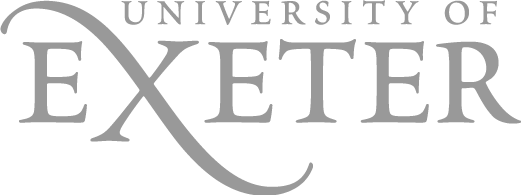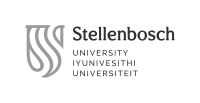S2425 Dickens, London, and the Environment
Professors
Schedule
Course Description
Focusing on just two novels by Charles Dickens—Bleak House and Our Mutual Friend—we will consider the place of the city in his writings and the way that he describes the effects of human activity on the environment. Such effects range from the omnipresent soot and fog in the novels to the descriptions of pollution of the Thames. His novels are also marked by their attention to the human upheaval caused by such environmental disruptions: the displacement of people by the building of the railways, the effects of pollution and filth on the lives of impoverished people in the city, the shifts in patterns of life caused by industrialization. A major aspect of Dickens’s realism is his consideration of the ways the interlocking human networks of affiliation and economic competition interact with environmental shifts of his period, particularly in the city. Attending to such questions, while also considering his contributions to the novel genre and its depiction of psychology, our discussions will focus on the slow and detailed reading of these two novels, with reference to theorists of literature and the environment. The first half of the course will focus on Bleak House; the second, on Our Mutual Friend, with theoretical and literary critical interludes in both halves from the environmental humanities.
Learning Outcomes
The course will:
1. Introduce students to some general questions of environmental studies and ecocriticism in the narrow context of literary studies;
2. Offer an introduction to the novels of Charles Dickens; and
3. Suggest ways to think about the close reading of literary texts.
Course evaluation
Class presentation and participation: 20%
Midterm paper: 30%
Final Paper: 50%
Requirements
1. Attendance and thoughtful participation in class discussion
2. Oral presentations: each student will give two SHORT (no more than 5-minute) introductions to a text that we are discussing. (There will be a signup sheet online.) In these presentations, you should point us to one passage that you would like to discuss. You do not need to have a fully developed reading; your primary job will be to point us to a passage that interests or perplexes you and then to raise a series of questions that you think it will be useful for us to discuss.
3. Midterm paper:
Option One:
--Choose one short passage from one of the novels in the course, and type it
out at the top of the page.
--Write one to two pages about the passage, highlighting intriguing or perplexing details. (These details might include: the vocabulary or syntax; the cadence or sound; tensions or excesses in the figurative language; effects of tone; difficulties or otherwise intriguing aspects of voice or perspective; the relation to what comes before or after the passage; and so on. I will provide a longer guide to possible questions for literary reading.)
Option Two:
--Choose one of the theoretical readings for the course, and write a one-to-two-page summary of it. You should give a careful and accurate account of its argument, while also highlighting potential tensions or difficulties that you see in it.
4. Final paper:
Again, two options:
Option One:
Begin with your midterm paper or else choose a different text, choosing a passage that particularly interests you, and that you think raises conceptual questions that can be expanded into a 5-10 page paper. The conceptual question might develop from our theoretical readings, or it might be a question about the consequences of a particular effect you have noticed in your text having to do, for example, with the narrative voice, tone, modes of characterization, perspective, figurative language, modes of address, and so on. You don’t need to spell this out at the beginning of the paper; by the end of the paper, though, it should be clear to you (and your reader) what your question was. You might want to talk to me about the question and perhaps your selection of passages.
--revise (expand, cut, rewrite) your original reading of your passage (do this now, or after you have done the steps below).
--return to 3 to 5 other passages in your text that allow you to formulate and then add nuance or complication to the question that has been raised for you by your initial passage. Write similar readings (of about one page or more) of each of these passages, and then decide on the order in which these readings should be presented. (You might think about ordering them from simplest to most complex; in any event, you should think about what order makes sense. (You can also decide on the order before you compose the readings, of course.)
--write the connective material linking your readings together into a single argument. This connective material will also lead you to reconsider the readings you have made. So revise those with your new sense of the connections in mind. (This is the stage at which the “general” question should become more and more clear to you. It is fine for you to start with your passages and to get to the general question by linking them together.)
Option Two:
--Choose three to four significant passages from the theoretical material in the course, and type them out as discrete quotations that you will address in your paper.
--For each one, write a brief account that gives a quick summary of the larger argument of the essay from which it is drawn (you can incorporate your midterm summary here, if relevant), and highlighting what you think are the important conceptual questions raised.
--As in option one, then, write the connective material linking your readings together into a single argument. This connective material will also lead you to reconsider the readings you have made. So revise those with your new sense of the connections in mind. (This is the stage at which the “general” question should become more and more clear to you. It is fine for you to start with your passages and to get to the general question by linking them together.)
For both options, once you have completed the preliminary steps:
--revise the entire paper, seeing it now as a whole rather than a series of discrete parts. Each time through, consider what you may have missed in the readings of your passages. Are there details that you glossed over or misconstrued? Is the order right, or do you need to reshuffle things?
--revise the paper at least once looking only at your sentences: are they as clear and elegant as they can be? If you read the paper out loud, is there any sentence that sounds terrible (awkward, confusing, not what you meant)? Does each sentence say what you meant, in the clearest possible language?
--you might note (for yourself) that this is all a different procedure than starting with a generalization and then seeking for evidence. (Do not think of the passages as “evidence” for a “thesis.”) Here, you begin by noticing something small; the generalization or argument is produced by linking that observation to a series of other, similar observations.
--if you want to look at secondary material, that is fine (but is not required for the final paper in the course). If you decide you would like to consider secondary material, begin your search with the MLA Bibliography. On the Boston College site you can find it here: https://search.ebscohost.com/login.aspx?authtype=ip,shib&custid=s4194587&profile=ehost&defaultdb=mzh. For students at other institutions, check your university library webpage. You will find scholarly articles and books here; it should be much more reliable than google. You can also begin with a search on your library’s webpage, but the MLA bibliography is more targeted to literary scholarship. You might also remember that publication does not, unfortunately, ensure quality; you will need to decide for yourself what you think of each argument.
--the final paper should be between 5 and 10 pages (a little more is fine, too). Papers should be typed, double-spaced, and carefully proofread. Email them to me (at Ohi@bc.edu), on or before the deadline.
--You can talk to me about your paper at any point during the semester.
Syllabus
(The readings are listed for the day of our discussions; read the indicated texts before the class for which they are listed.)
Week One:
Day One: Introductions
Day Two: Raymond Williams, “People of the City” from The City and the Country
--begin Bleak House
Week Two:
Day One: Dickens, Bleak House
Day Two: Karen Chase and Michael Levenson, “Green Dickens,” in Eileen Gillooly and Deirdre David, eds., Contemporary Dickens (The Ohio State University Press, 2008), 131-51
Jesse Oak Taylor, “Anthropocene,” Victorian Literature and Culture 46, no. 3-4 (2018): 573-77 [https://doi.org/10.1017/S106015031800027X ]
Week Three:
Day One: Bleak House, continued.
Day Two: Bleak House, continued.
Week Four:
Day One: Bleak House, continued.
Day Two: Bleak House, continued
Week Five:
Day One: Bleak House, continued
Day Two: John Parham, “Dickens in the City: Science, Technology, Ecology in the Novels of Charles Dickens,” Interdisciplinary Studies in the Long Nineteenth Century 10 (2010), 2-23.
Week Six:
Day One: Bleak House, continued.
Day Two: Jesse Oak Taylor, “Realism after Nature: Reading the Greenhouse Effect
in Bleak House,” from The Sky of Our Manufacture: The London Fog in British Fiction from Dickens to Woolf (U of Virginia Press, 2016), pp. 21-43
Week Seven:
Day One: Allen Macduffie, “Energy Systems and Narrative Systems in Charles Dickens’s Bleak House,” from Victorian Literature, Energy, and the Ecological Imagination (Cambridge UP, 2014), 89-113.
Day Two: Excerpt from Zachary Samalin, “The Odor of Things,” Chapter One of The Masses Are Revolting: Victorian Culture and the Political Aesthetics of Disgust (Cornell UP, 2021), pp. 37-39;
Mary L. Shannon, “The country in the city: Dickens and the idyllic river.” Victorian
Sustainability in Literature and Culture, edited by Wendy Parkins, Routledge, 2018,
pp. 105–25.
--begin Our Mutual Friend
Week Eight:
Day One: Dickens, Our Mutual Friend
Day Two: Our Mutual Friend, continued
Week Nine:
Day One: Our Mutual Friend, continued
Day Two: Our Mutual Friend, continued
Week Ten:
Day One: Ian Duncan, “Dickens: Transformist,” from Human Forms: The Novel in the Age of Evolution (Princeton University Press, 2019), 123-57.
Day Two: Our Mutual Friend, continued
Week Eleven:
Day One: Our Mutual Friend, continued
Day Two: Day Two: Allen MacDuffie, “The Renewable Energies of Our Mutual Friend,” from Victorian Literature, Energy, and the Ecological Imagination, 114-36
Week Twelve:
Day One: Jesse Oak Taylor, “Specters of Capital: Our Mutual Friend and the Economy of Smog,” from The Sky of Our Manufacture, pp. 44-67.
Day Two: Frances Ferguson, “Climate Change and Us” Diacritics 41, No 3 (2013): 32-38. DOI: https://doi.org/10.1353/dia.2013.0012
Dana Luciano, “Out of Time,” Victorian Studies 64, No 3 (Spring 2022): 434-441. DOI:
https://doi.org/10.2979/victorianstudies.64.3.04
Texts
Charles Dickens, Bleak House
ISBN: 9780192834010
Charles Dickens, Our Mutual Friend
ISBN: 9780140434972
Various critical essays
If possible, buy copies of the two Dickens texts (the ISBNs are for the editions I will use in class); however, both novels, and all of the other critical texts, will be available in pdf online.
Last update: January 22, 2024


















